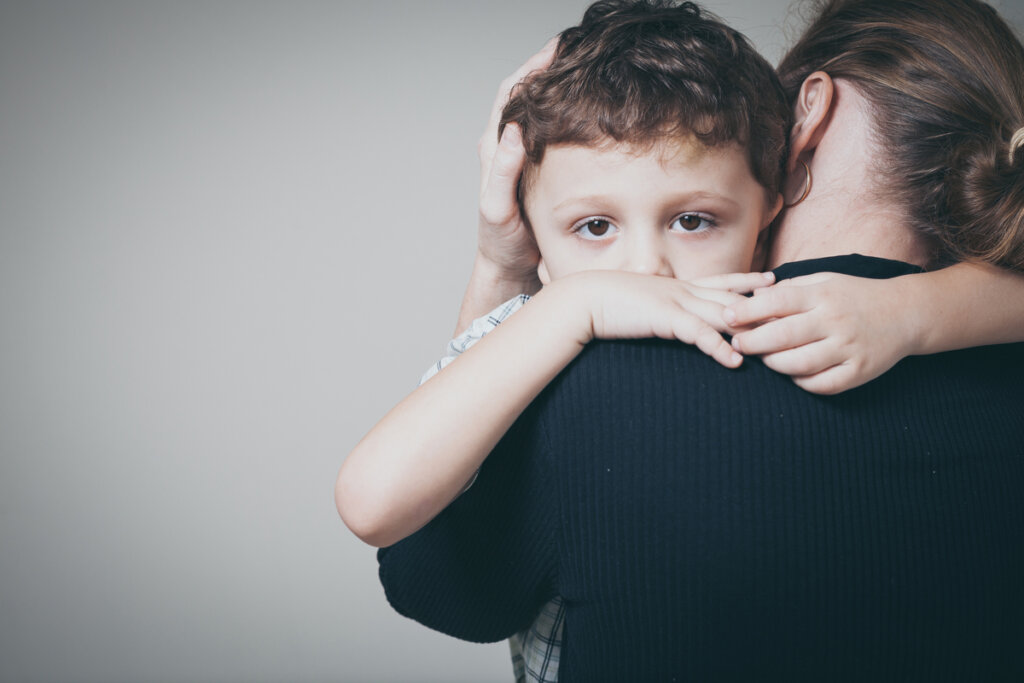How Does Attachment Work in Therapy?

Every person is an island who’s also dependent on other islands (people). Feeling the support of others is adaptive and necessary. However, like everything, it needs a balance to be functional and healthy. For this reason, in certain cases, it’s necessary to work on attachment in therapy.
The way in which we relate to others, especially during childhood, has a clear influence on who we are today. For instance, it affects our levels of self-esteem, how we resolve interpersonal conflicts, our capacity for empathy, and much more. Working on attachment means operating with the relationship we have with the world.
Here, you’ll find some of the most used techniques in consultation for achieving a healthy and safe attachment. It’s a complex issue and one that must always be handled in therapy with the utmost care.
Attachment
Attachment is the innate predisposition that we all possess to establish bonds with others. It concerns how these bonds are established, thanks to the interaction that others have with us. The first manifestation of this characteristic occurs in caregiver-baby interactions. That’s because, it’s through them, that the bonds that guarantee the care and safety of the infant are created.
This first configuration of attachment will have a decisive impact on the development of the infant’s brain. Through it, the child gets to know the world and attributes a kind of logic to it. Furthermore, they start to form concepts and learn relational dynamics. In fact, they develop the silhouette of their self-image. However, this creative nature of attachment is also capable of generating trauma and maladaptive learning.
For example, a lack of security or the emotional distance of the parents will be harmful to a child. They’ll affect both the development of their emotional and social lives.

Attachment disorders and how they’re reflected in adult life
When a person receives the consistent love and security expected from a caregiver, they develop a secure attachment. It means, as an adult, they’ll be independent and confident and will feel that the world is a safe place. However, when any of the factors mentioned above isn’t received or is received in a distorted manner, an attachment disorder may appear:
- Avoidant attachment. The adult didn’t have their emotional needs met in their childhood. The result is an individual who learns that no one can be trusted. Nevertheless, despite seeming indifferent to the estrangement of their loved ones, they often experience great anxiety in their relationships. This prevents them from strengthening ties with others.
- Anxious or ambivalent attachment. The caregivers of individuals with this disorder respond inconsistently to their needs, causing confusion. As a result, the adult becomes hypervigilant and dependent, fearing that their attachment figure will disappear at any moment.
- Disorganized attachment. This kind of attachment appears when the infant is mistreated by their caregivers. They live with a feeling of permanent fear and have difficulties communicating and relating in general. That’s because they had no healthy model or treatment in their childhood to build upon.
How to treat attachment in therapy
Now that you know about attachment disorders, you can probably imagine that they manifest themselves in extremely different ways in each individual. In addition, the age of the subject, their sociocultural status, and the experiences they’ve had up to adulthood are also relevant.
Below are some of the techniques used to work on attachment in therapy.
Somatic treatment
The ongoing stress and anxiety that accompany attachment disorders take their toll on the body. Therefore, it’s necessary to identify the psychosomatic symptoms and treat them, together with the psychological symptoms.
Environment therapy
People who have an attachment disorder lived their childhood in a hostile environment. Therefore, part of therapy involves setting up a safe and welcoming atmosphere and relationship with the therapist. If the patient doesn’t feel safe in therapy or in the relationship with the professional, it’ll be more difficult for them to comply with any agreed intervention (adherence to treatment).
If the individual sees the world and relationships as unsafe and undesirable, the first step will be to show them that this isn’t always the case. Indeed, the best way to convince them that they can start relating to others in a healthy way is to create a healthy relationship between them and the therapist.
Psychotherapy
Finally, the therapy itself will work on aspects of the individual that are deficient or negative when it comes to them conceiving the world and relationships. This is a broad and long undertaking where the patient learns emotional regulation, social skills, and awareness of their surroundings.

Techniques
Techniques vary and are specific to each individual case. Here are some of the most used:
- Circle of Security. With this technique, parents of young children are taught to give their children freedom without neglecting their needs. It’s based on giving space when a child needs it, being present when they look for their caregiver and picking them up when they need to escape from a situation.
- Mentalization. It consists of working on the mental conception of the child in the minds of the caregivers. It involves seeing the child as someone with feelings, desires, and intentions. This influences the kind of care behavior the caregiver exercises over the child.
- EMDR. This is a technique used to desensitize the subject to traumatic memories from their childhood through eye movements. Although it has nothing to do with attachment itself, it’s been shown to be effective in treating trauma.
Depending on the adjuvant disorders that might develop, other approaches can be used. For example, for those with borderline personality disorder, transference-focused psychotherapy may be helpful.
It’s always a good idea to enlist the help of a psychologist to deal with any kind of psychological suffering. In the case of attachment, as it’s an aspect of people as old as themselves, professional help will always be necessary.
All cited sources were thoroughly reviewed by our team to ensure their quality, reliability, currency, and validity. The bibliography of this article was considered reliable and of academic or scientific accuracy.
- Sandí, M. A. (2019). Intervenciones psicoterapéuticas basadas en la teoría del apego. Revista Cúpula, 33(1), 33-53.
- Ebeling, L., & Quehenberger, J. ¿Cómo tratar a niños con trastornos de apego severos tras múltiples experiencias tempranas de trauma? Un modelo de tratamiento en una unidad de cuidado intensivo psicoterapéutico.
This text is provided for informational purposes only and does not replace consultation with a professional. If in doubt, consult your specialist.








